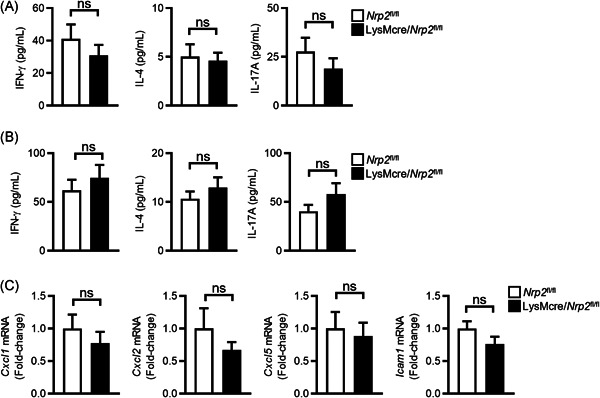Figure 5.

Myeloid‐specific ablation of NRP2 does not affect T helper cell responses to inhaled antigens or lung expression of neutrophil recruitment factors. (A, B) Nrp2 fl/fl (white bars) or LysMcre/Nrp2 fl/fl mice (black bars) were sensitized with OVA and LPS and then challenged with OVA as in Figure 2A. (A) Lung‐draining lymph nodes cells were collected following the OVA challenge and stimulated ex vivo with OVA antigen. Four days later, levels of T helper cytokines (IFN‐γ, IL‐4, and IL‐17A) in cell culture supernatants were measured by ELISA. (B) T helper cytokine levels in BALF following OVA challenge as measured by ELISA. (C) Lung expression of neutrophil chemokines and ICAM‐1 as determined by qPCR. Data are presented as fold‐change relative to Nrp2 fl/fl mice. Bars represent mean ± SEM (n = 11–16 mice per group), Student's t‐test. BALF, bronchoalveolar lavage fluid; ELISA, enzyme‐linked immunosorbent assay; IFN‐γ, interferon‐γ; IL‐4, interleukin‐4; LPS, lipopolysaccharide; mRNA, messenger RNA; NRP2, neuropilin‐2; ns, not significant; OVA, ovalbumin
